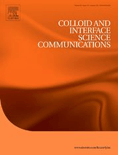
Colloid and Interface Science Communications
metrics 2024
Advancing Knowledge in Colloid and Interface Science
Introduction
Colloid and Interface Science Communications is a prestigious peer-reviewed journal published by Elsevier, specializing in the vibrant fields of colloid and surface science, along with biotechnology. With an impressive open access policy initiated in 2022, this journal ensures wide dissemination of groundbreaking research. Its impact is reflected in its high standings within various Scopus category quartiles—ranked Q2 in Biotechnology and Colloid and Surface Chemistry, and Q1 in Materials Chemistry, Physical and Theoretical Chemistry, as well as Surfaces, Coatings and Films for 2023. Furthermore, it boasts exceptional Scopus rankings, including a top percentile position in several materials science categories, indicating its significant contribution to the scientific community. Published in the Netherlands, Colloid and Interface Science Communications aims to foster knowledge sharing and collaboration by providing a platform for innovators and researchers to explore cutting-edge developments in surface phenomena and materials interactions. As a key resource for researchers, professionals, and students alike, it plays a critical role in advancing our understanding and application of colloidal and interface science.
Metrics 2024
 0.87
0.87 4.70
4.70 4.60
4.60 40
40Metrics History
Rank 2024
Scopus
IF (Web Of Science)
JCI (Web Of Science)
Quartile History
Similar Journals
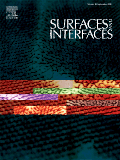
Surfaces and Interfaces
Connecting Disciplines through Surface InsightsSurfaces and Interfaces is a leading international journal published by Elsevier, dedicated to advancing the understanding of surface and interfacial phenomena across various disciplines, including chemistry, materials science, and physics. With an impressive impact factor placing it in the Q1 quartile for its categories as of 2023—spanning Chemistry, Condensed Matter Physics, and Surfaces, Coatings, and Films—this journal not only serves as a critical platform for innovative research but also reflects the dynamic nature of surface science in contemporary applications. The journal is indexed in Scopus, ranking 25th out of 132 in the Materials Science – Surfaces, Coatings and Films category, marking it in the top 19% of this prestigious field. Although it is not an open-access platform, the journal remains a vital source of curated academic material for researchers, professionals, and students seeking to deepen their knowledge and contribute to ongoing conversations in surface and interface science. Published from the heart of Europe in Amsterdam, Surfaces and Interfaces invites submissions that challenge conventional paradigms and explore the forefront of technology and materials.
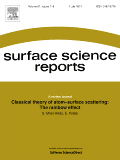
SURFACE SCIENCE REPORTS
Advancing the Frontiers of Surface KnowledgeSURFACE SCIENCE REPORTS, published by Elsevier, is a premier journal dedicated to the field of surface science, exhibiting exceptional rigor and relevance in its contributions. With its ISSN 0167-5729 and E-ISSN 1879-274X, this journal has maintained an influential presence since its inception in 1981 and is set to continue its impactful trajectory through 2024. Recognized with a Q1 classification across multiple related disciplines—including Chemistry, Condensed Matter Physics, and Materials Science—it consistently ranks among the top journals, as evidenced by its impressive Scopus rankings, like #4 in Surfaces and Interfaces and #6 in Metals and Alloys. This positions the journal as a critical resource for researchers and professionals seeking cutting-edge insights into the interactions, properties, and applications of surfaces and interfaces. Although the journal follows a traditional subscription model, its comprehensive reviews and scholarly articles make it an invaluable asset for advancing knowledge in this dynamic field. By choosing to publish in SURFACE SCIENCE REPORTS, authors join a distinguished community pushing boundaries in the understanding and technological advancements related to materials and their surface characteristics, fostering collaboration and innovation worldwide.
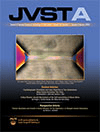
JOURNAL OF VACUUM SCIENCE & TECHNOLOGY A
Exploring the Depths of Surfaces and Interfaces.JOURNAL OF VACUUM SCIENCE & TECHNOLOGY A, published by the esteemed American Institute of Physics, is a leading journal in the field of materials science and applied physics, with an ISSN of 0734-2101 and an E-ISSN of 1520-8559. This publication serves as a vital platform for researchers and professionals focused on condensed matter physics, surfaces and interfaces, as well as coatings and films, contributing significantly to our understanding of vacuum technology and its applications. With a commendable Q2 ranking in key categories such as Condensed Matter Physics and Surfaces and Interfaces, the journal showcases rigorous research that pushes the boundaries of science and technology. The journal is particularly noted for its impact within the community, holding impressive Scopus rankings that highlight its relevance and influence. Although not an Open Access journal, it remains a crucial resource for academics seeking high-quality, peer-reviewed articles from 1970 through 2024. We invite you to explore the latest advancements and innovative findings that this journal presents, positioning you at the forefront of research in vacuum science.

COLLOID JOURNAL
Illuminating the pathways of physical and theoretical chemistry.COLLOID JOURNAL, published by PLEIADES PUBLISHING INC in the United States, is a pivotal platform for disseminating cutting-edge research in the fields of Colloid and Surface Chemistry, Physical and Theoretical Chemistry, and Surfaces and Interfaces. With an ISSN of 1061-933X and E-ISSN 1608-3067, this journal offers a valuable resource for researchers and professionals seeking to explore advancements in colloidal systems and surface phenomena. Although currently categorized in the lower quartiles (Q4) within its respective fields, the journal serves as an essential space for emerging ideas and methodologies, contributing to the broader understanding of material interactions at the micro and nano scales. The H-index and specific impact factor data are yet to be determined, but the journal maintains a dedication to high-quality peer-reviewed content that continues to shape the landscape of colloid science. Researchers and students alike will find the COLLOID JOURNAL an indispensable reference for keeping abreast of the latest developments, despite the absence of open access options, reflecting the journal's traditional publishing model. With converged years from 1989 to 2024, it represents a long-standing commitment to scholarly dissemination and exploration in its fields of study.

e-Journal of Surface Science and Nanotechnology
Advancing Knowledge in Surface Science and NanotechnologyThe e-Journal of Surface Science and Nanotechnology, published by the SURFACE SCI SOC JAPAN, stands as a pivotal platform for the dissemination of groundbreaking research in the fields of surface science and nanotechnology. With an ISSN of 1348-0391 and a commitment to open access publication since 2003, this journal ensures that innovative findings are accessible to a global audience, fostering collaboration among researchers, professionals, and students. The journal spans a wide array of disciplines, as evidenced by its 2023 category quartiles, which include Q3 rankings in Biotechnology and Mechanics of Materials, as well as Q4 standings in Bioengineering, Condensed Matter Physics, and various surface-related fields. This diverse scope makes it an essential resource for those engaged in advanced scientific research and applications. The journal’s unique position within its categories—Ranging from Q3 to Q4 in various Scopus rankings—highlights its niche yet vital contribution to advancing knowledge in both fundamental and applied sciences. By continually converging from 2005 to 2024, the e-Journal of Surface Science and Nanotechnology embodies the integration of innovative studies and novel applications that drive the future of material sciences.
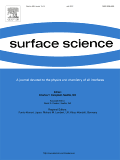
SURFACE SCIENCE
Illuminating the Science Beneath the SurfaceSURFACE SCIENCE is a prominent journal in the fields of Condensed Matter Physics, Materials Chemistry, and Surface Engineering, published by Elsevier in the Netherlands. With an ISSN of 0039-6028 and an E-ISSN of 1879-2758, the journal encompasses a wide range of research related to the physical and chemical properties of surfaces and interfaces, serving as a valuable resource for researchers, professionals, and students alike. As of 2023, it holds a Q3 ranking across multiple categories, indicating its significant contribution to its respective fields, despite room for improvement in its overall impact within the scientific community. Researchers will find that SURFACE SCIENCE provides a platform for innovative and interdisciplinary studies, making it essential for those looking to stay updated on emerging trends and technologies in surface science. While the journal is currently not open access, its reputation and robust indexing reinforce its importance in advancing scientific knowledge and fostering new discoveries.
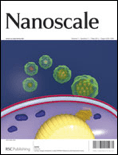
Nanoscale
Connecting Global Minds in Nanoscience.Nanoscale is a premier academic journal published by the Royal Society of Chemistry, dedicated to advancing the field of nanoscience and nanotechnology. With both its ISSN (2040-3364) and E-ISSN (2040-3372) ensuring wide accessibility, the journal is renowned for its high-impact research contributions, reflected in its impressive 2023 Impact Factor and prestigious Q1 ranking in both Materials Science (Miscellaneous) and Nanoscience and Nanotechnology categories. Since its inception in 2009, Nanoscale has fostered a collaborative platform where leading researchers from around the globe share their innovative findings across a multitude of topics spanning from material synthesis to applications in nanotechnology. The journal not only serves as a valuable resource for professionals, researchers, and students but also actively engages the academic community in discussing emerging trends, thus shaping the future of nanoscience. Situated in the heart of the UK at Thomas Graham House, Science Park, Milton Rd, Cambridge CB4 0WF, Nanoscale remains a key publication for those looking to keep abreast of the latest breakthroughs in an ever-evolving field.

Journal of Nano Research
Connecting Scholars Through Nano InsightsThe Journal of Nano Research, published by Trans Tech Publications Ltd, is a distinguished academic journal dedicated to the rapidly evolving field of nanotechnology and materials science. With an ISSN of 1662-5250 and an E-ISSN of 1661-9897, the journal has been an important platform for researchers and professionals since its inception in 2008, continuing to provide high-quality peer-reviewed research through to 2024. Nestled in Switzerland, the Journal of Nano Research plays a pivotal role in disseminating cutting-edge findings, as recognized by its categorization in Q3 for Materials Science and Physics while being positioned in Q4 for Nanoscience and Nanotechnology as of 2023. With Scopus rankings highlighting its impact, including Rank #129 in general Physics and Astronomy and Rank #300 in Materials Science, this journal is crucial for academics seeking to stay ahead in research trends and innovations in nano-related disciplines. Although it operates under a subscription model, the journal's objectives include fostering collaboration and knowledge-sharing among researchers, making it an invaluable resource for anyone immersed in the world of nanotechnology.

Protection of Metals and Physical Chemistry of Surfaces
Innovative Insights into Materials and CoatingsProtection of Metals and Physical Chemistry of Surfaces is a prominent academic journal published by MAIK NAUKA/INTERPERIODICA/SPRINGER, which provides a specialized platform for researchers and professionals in the fields of materials chemistry, metals and alloys, organic chemistry, as well as surfaces, coatings, and films. With an ISSN of 2070-2051 and an E-ISSN of 2070-206X, the journal is recognized for its rigorous peer-reviewed content and comprehensive coverage of innovative research addressing the latest advancements in material protection and surface chemistry. As of 2023, the journal has been categorized in the Q3 quartile across several relevant fields, highlighting its increasing influence within the scientific community. Although the journal is relatively niche, its open access model encourages wide dissemination of knowledge, fostering collaboration and advancements within its core disciplines. Research published in this journal plays a crucial role in not only enhancing theoretical understanding but also facilitating practical applications in various industries, thereby underlining its importance for students, researchers, and professionals alike.

Surfaces
Driving Discoveries in Interdisciplinary Surface ResearchSurfaces is an esteemed academic journal published by MDPI in Switzerland, operating as an open access platform since 2018. With an E-ISSN of 2571-9637, this journal focuses on the interdisciplinary advancements in the fields of chemistry, materials science, and physics, particularly in the domain of surfaces and interfaces. As a testament to its scholarly impact, Surfaces is ranked in the second quartile for multiple categories as of 2023, including Chemistry (miscellaneous), Materials Science (miscellaneous), Surfaces and Interfaces, as well as Surfaces, Coatings and Films, showcasing its relevance within these disciplines. Researchers and professionals seeking to disseminate and acquire knowledge on the latest innovations can benefit from the journal's rigorous peer-review process and commitment to quality, ensuring visibility and accessibility for current developments in surface technology and material interactions. With a growing archive from 2019 to 2024, Surfaces stands out as a vital resource for the academic community.